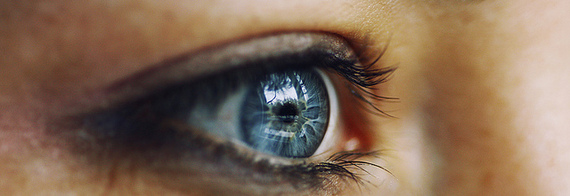
Photo: Blue by Omar Unlu / CC BY 2.0Welcome to Industrialisation 4.0
There’s no escaping, like or hate it, we have officially entered the Forth Industrial Revolution. Digitalisation, automation and AI are changing the landscape around us. Even reality seems to be in flux.
“The thing our grandchildren will think quaint about us was that we distinguished the digital from the real.” William Gibson, Rolling Stones Magazine.
My taxi driver last week explained to me how he saw it: robots will take our jobs, teach each other and then rise up against us. Nice. Also the plot to Terminator. Whilst I laugh, I also recently visited a ‘dark factory’. A factory where robots build other robots. With no need to spend money on lighting for machines with no eyes, they work in the pitch black. An eerie new world. My driver on hearing this nodded knowingly. “Bleak” he stated solemnly. And yet, I disagree.
A Creative Revolution
Like Christian Kromme, author of Humanification, I believe that the Forth Industrial Revolution will be followed by a new revolution: Human Creativity. Centuries ago the invention of the plough totally changed what it meant to be human. Suddenly one fifth of the population could provide food for the rest, freeing the others to create a range of incredible things. Culture flourished. So too I believe AI and automation can free us again, giving us back time. Time to connect and time to create. I am excited.
I believe humans can and want to create. The question is does modern society allow us to? Important features of creativity includes divergent thought, collaboration, cross discipline and lateral thinking. Creativity also needs space to be fantastical, resilience to be within negative capability and the courage to risk failure. But in our society to do all these things we need not just to think outside the box but to be outside the box.
Outside the Box
I worry that our education system and societal norms does not value, prioritise or nurture these qualities. I remember being told by my science teacher that I was far too much of a fantasist to be a scientist, far too much of a day dreamer to do an academic degree and far too disruptive to be a prefect. Alongside this the school told me there was no way I could combine both arts and science subjects for A-Level. I did both. Now I realise it was the most progressive choice I ever made.
To progress as a society we need to embrace failure and praise the courage to try. We need to support cognitive dissonance even in those whose ideas seem farfetched. We need to dream more. Not just to create lovely things, but also to find creative solutions to global problems, from climate change to population growth, disease and the future of humanity.
The Dreamers
The importance of dreaming as a basis of creativity was highlighted to me when I was fortunate enough to sit beside an eminent clinical neurologist, Nachev Parashkev, at a supper club last month. Parashkev has built an artificial neural network that, given huge amounts of data, uses deep learning to create ‘artworks’. He discovered that in order to get it to produce works that were arguably ‘creative’, he had to add ‘noise’ into the learning process. This ‘noise’ was a randomness, placed into the system, which caused the computer to add unpredictable visual elements into the art: faces in places where there were none, linear disruptions and so on. It appeared to cause the computer to ‘dream’. Dreaming perhaps of electric sheep? It seems ironic that computers may be able to teach us something we have forgotten ourselves, the importance of dreaming.
Of course it’s not easy when many creative types of thinking are labeled by our society as traits of madness. For example, “Knight’s Move Thinking” in psychology, often seen to be a trait in schizophrenia, is also a clever strategy to produce unpredictable thought patterns. Thought patterns with seemingly illogical associations that are often original and highly creative. As in the movement of the chess piece, it does not go straight forward, but turns a surprise corner left or right as it forges ahead. We need to be careful that we do not link thinking with a pathology and we must be wary of a society that deems those who are original and creative as possibly mad.
The Creative Revolution
So where does that leave humanity? We are living in an ever connected, rapidly changing world. I believe we can and we will adapt. But how we adapt will be about our mindset. I don’t think we need to reject technology, and highly doubt it will ever rise up against us. As I’ve seen, we can even learn from technology.
What is important though is that we realize the real opportunity technology provides us. The space to create. But creativity is a trait that needs to be nurtured to thrive and for that we need to embrace those whose thinking is fantastical, unpredictable and uncertain. The dreamers, for they may hold our future in their minds.